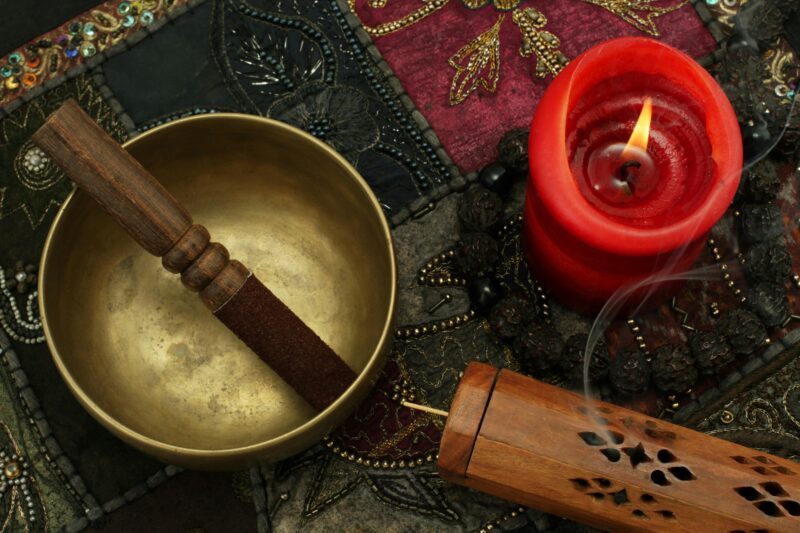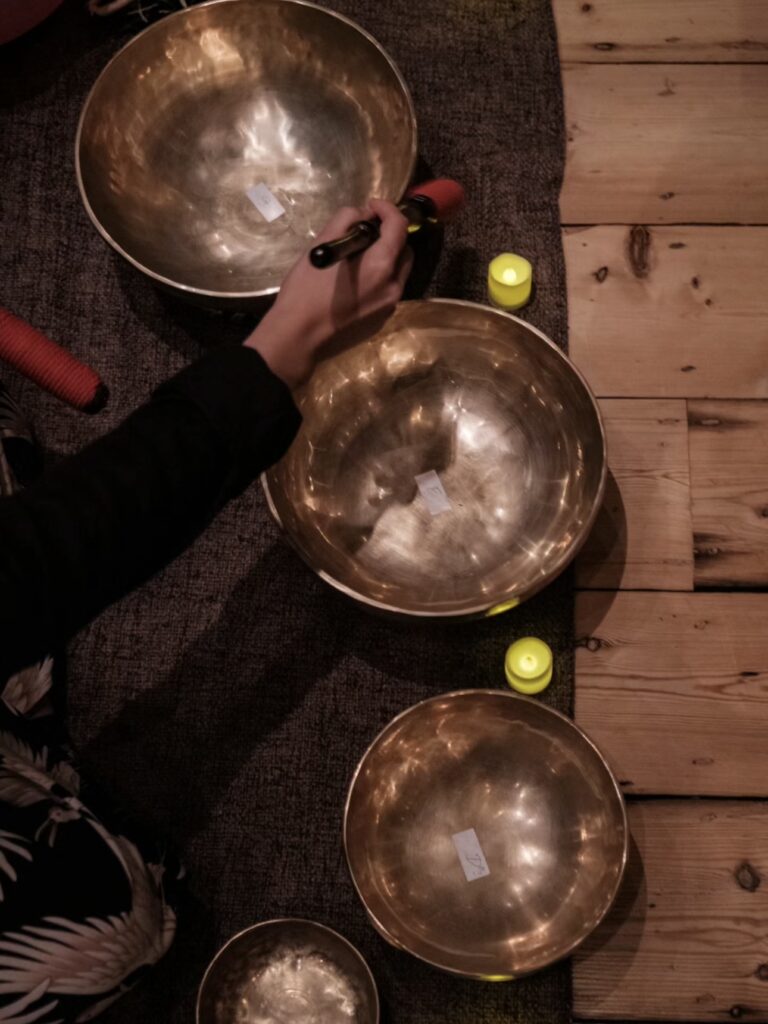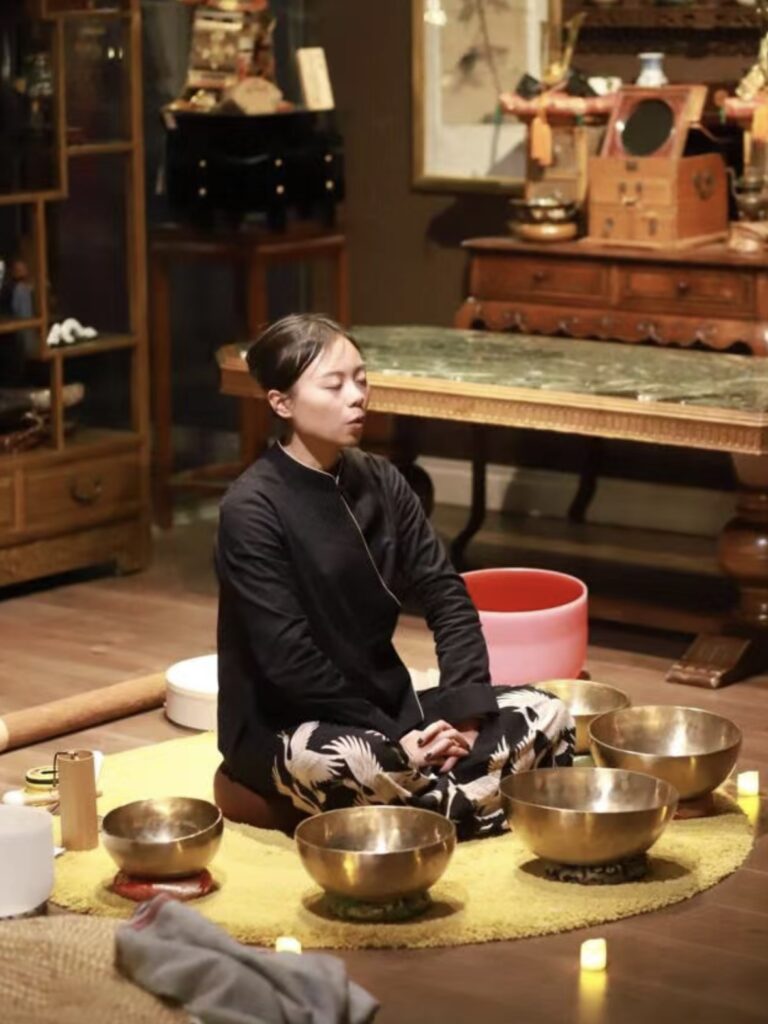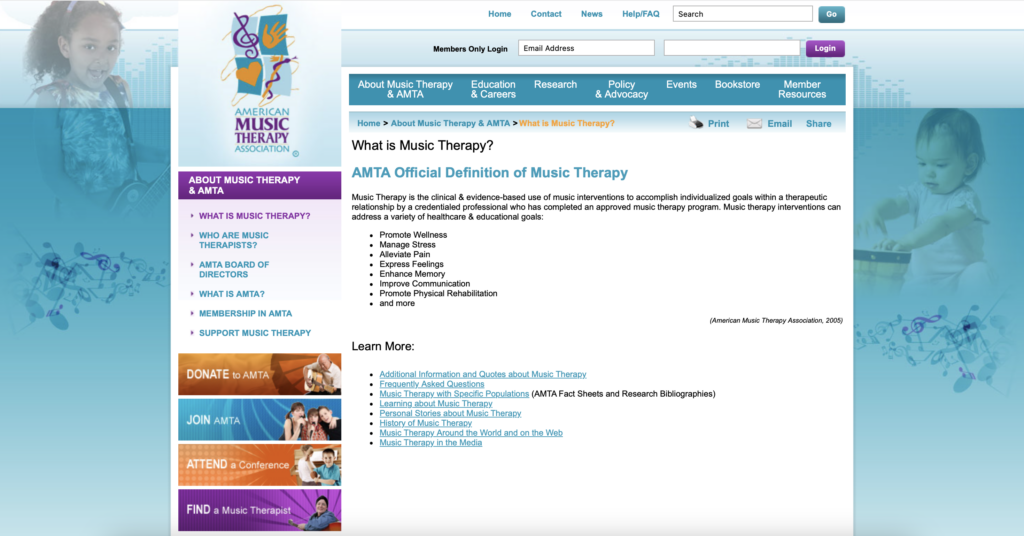
Sound baths use musical instruments such as singing bowls and pianos to help people relax. This practice of vibrating through instruments combines Eastern and Western traditions. Sound baths has become very popular in the UK these years. So how did sound baths spread and developed in the West? This article will give you a clear overview.

Singing Bowls
Singing bowls originated in the East and hold significant cultural importance in the Himalayan regions, such as Nepal and Tibet. The vibrations they produce through striking or rubbing are believed to influence the body’s energy fields, helping to calm the mind. Julia Tsang, a sound healer from The Little Tibet in London, has been working with Tibetan singing bowls for eight years. She believes that different instruments have subtle variations in their healing effects. For example, the sound of crystal singing bowls is clearer and produces higher resonance frequencies. While the sound of gongs is broader and deeper, catering to different healing needs.
But no matter which tool you use, they can help relieve tension in your body and bring you a sense of inner peace. —— Julia Tsang


Tibetan singing bowls play an important role in Tibetan Buddhism. Culturally, since the Tibetan singsing bowls originated in the East, it has different backgrounds and connotations compared to music therapy in Western society. Initially, the spread of these practices faced obstacles and challenges. Many questioned their effects, arguing a lack of scientific basis. Julia mentioned that increased cultural exchange has helped these traditional therapies gain wider acceptance. “We should respect and understand the cultural background of Tibetan singing bowls in practice. It’s important to ensure their origins are not distorted or simplified, thus preserving their cultural integrity,” Julia emphasised.
Music Therapy
Music Therapy originated in the West as a treatment method that uses musical elements to improve emotional and psychological well-being. In the early 20th century, it began to develop into a formal discipline in the United States and Europe, eventually being widely adopted in psychotherapy and other medical fields. Kimberly A. Bell, a Music Therapist from the American Music Therapy Association, notes that music therapists use a wide range of instruments and genres of music in their practice. There is no one type of instrument or music that has been deemed as “most effective”. Each instrument and genre has its own unique impact and purpose in therapy.
Our emotions have a big impact and can really affect our physical health. Music therapy has shown impressive results in reducing anxiety and promoting emotional well-being. —— Kimberly A. Bell

Challenges in Sound Baths
Kimberly A. Bell mentioned that while music therapy sometimes faces scepticism, this often stems from a lack of understanding of the field. She believes that evidence-based education and practice can greatly enhance people’s understanding of music therapy. Kimberly also noted that although sound baths may be effective for certain individuals, a challenge arises from the fact that many non-professionals are also offering sound baths, which could affect their effectiveness. Looking ahead, she emphasised the need for increased professional education and training to ensure the effectiveness and safety of sound baths.
“I feel sound baths can be effective for certain subsets of people when offered by skilled clinicians. The challenge is that sound baths are routinely being used in this country by not just music therapists but others in the sound healing community, whether appropriately educated or not,” Kimberly said.
While Kimberly points out the challenges of unqualified individuals practicing music therapy. This has led to public mistrust about its effectiveness. But there is a another issue at play. Public’s judgment affects perceptions of the field and the development of those entering this healing practice. Julia argues for a more patient and understanding approach for new healers. They should be given the space to grow without the burden of undue criticism.
Also available on SoundCloud
With the popularity of sound baths in the UK, the fusion of Eastern and Western therapies highlights the importance of understanding and respect. Sound healers emphasise the need for training and public education to reduce scepticism. As awareness improves, these therapies will be viewed more objectively, better serving public health and well-being.
This website is part of a student project. While the information on this website has been verified to the best of our abilities, we cannot guarantee that there are no mistakes or errors.
The material on this site is given for general information only and does not constitute professional advice.
The views expressed through this site are those of the individual contributors and not those of the website owner. We are not responsible for the content of external sites.